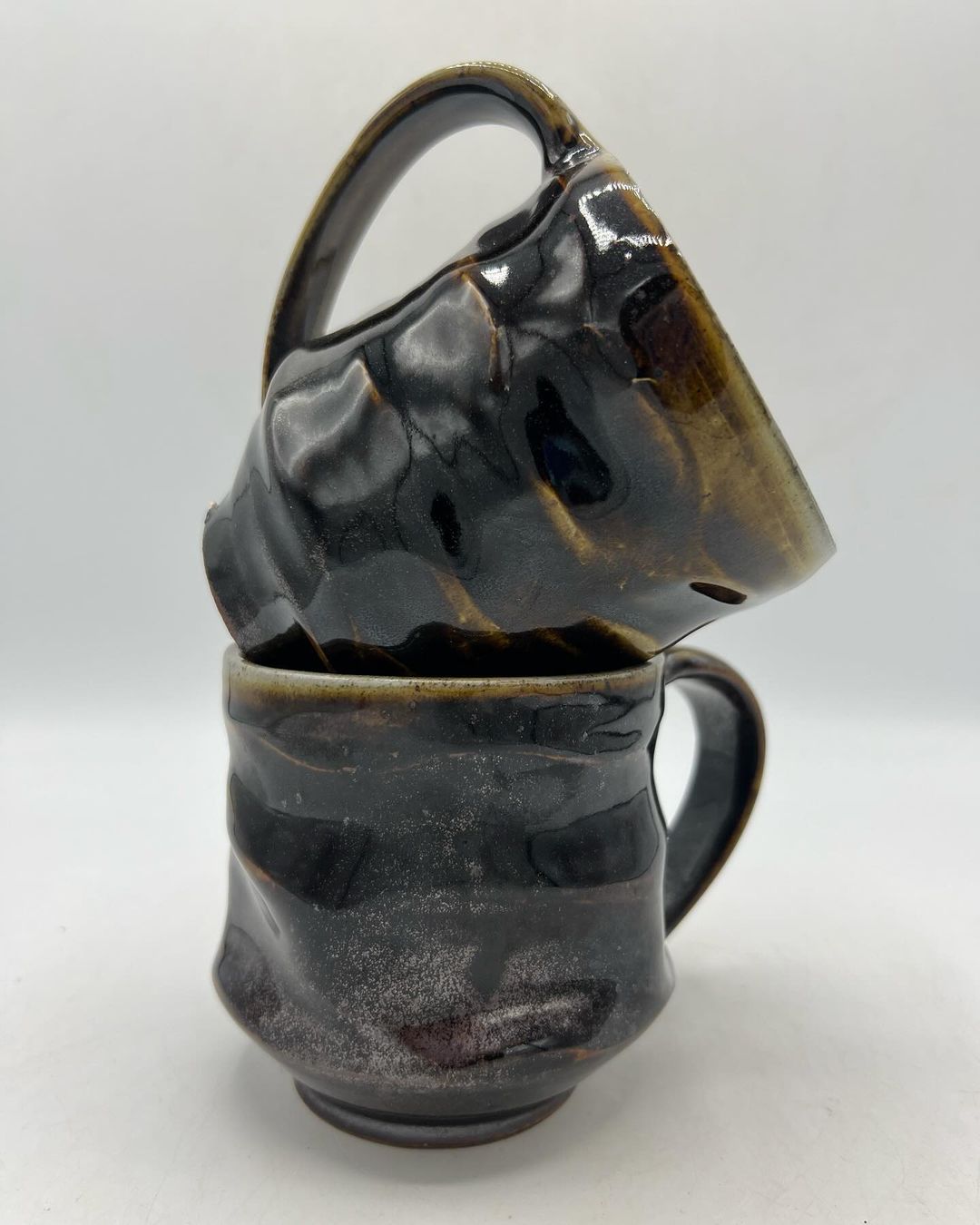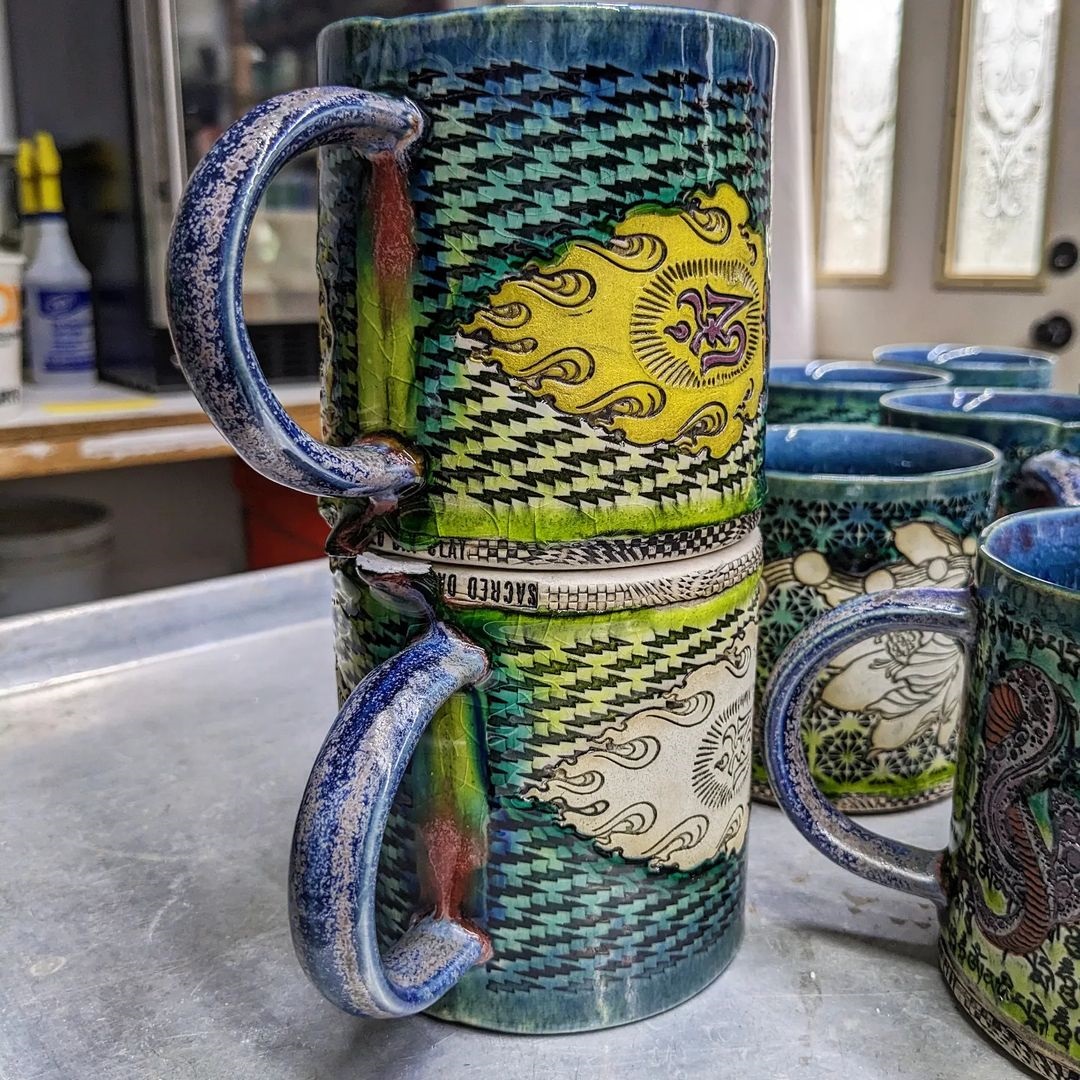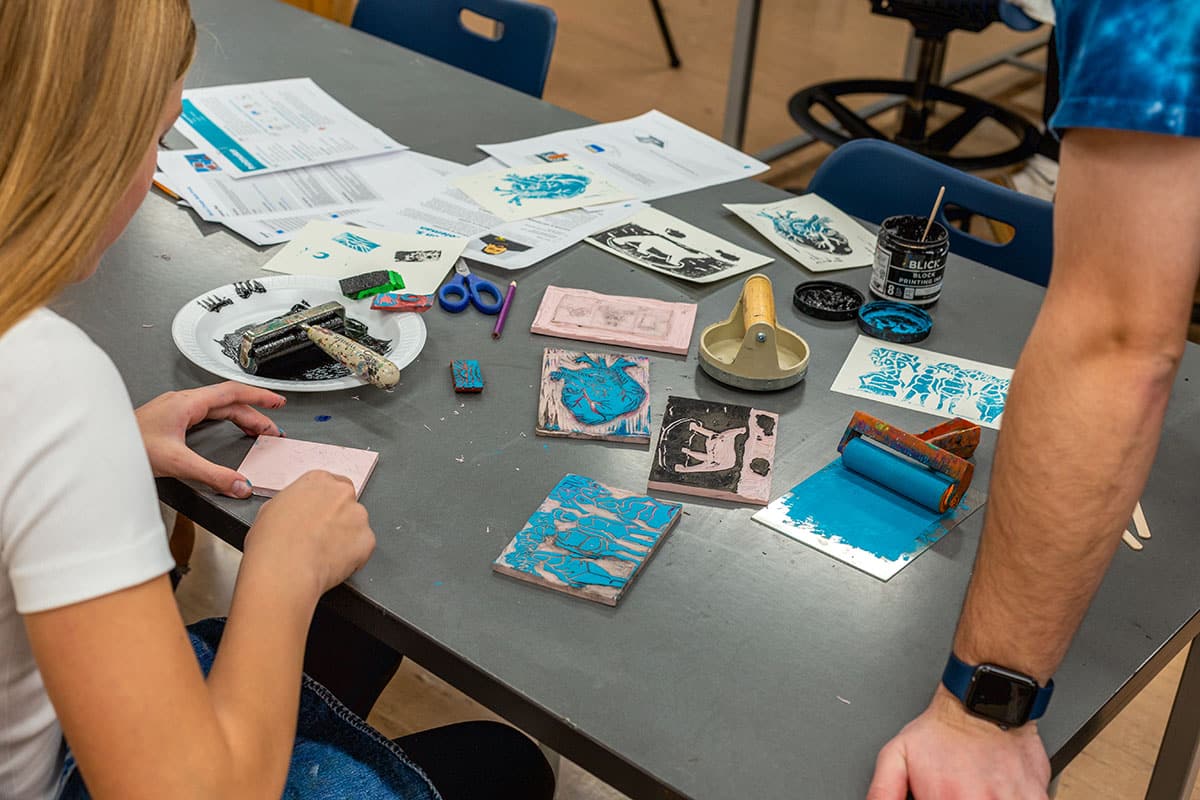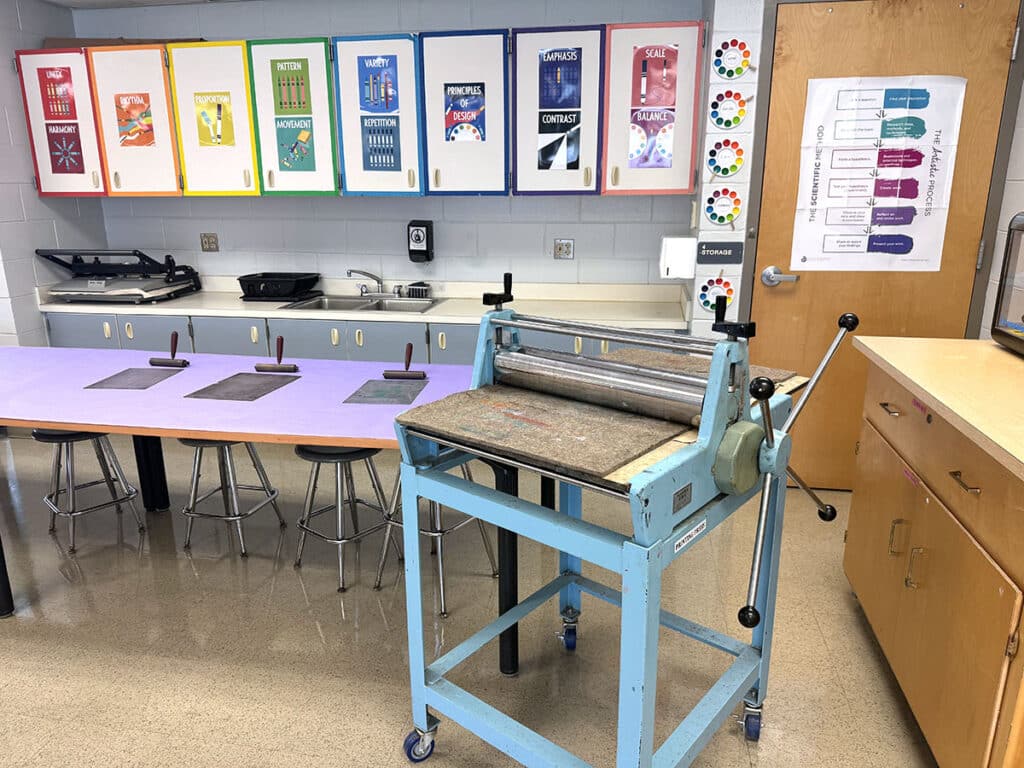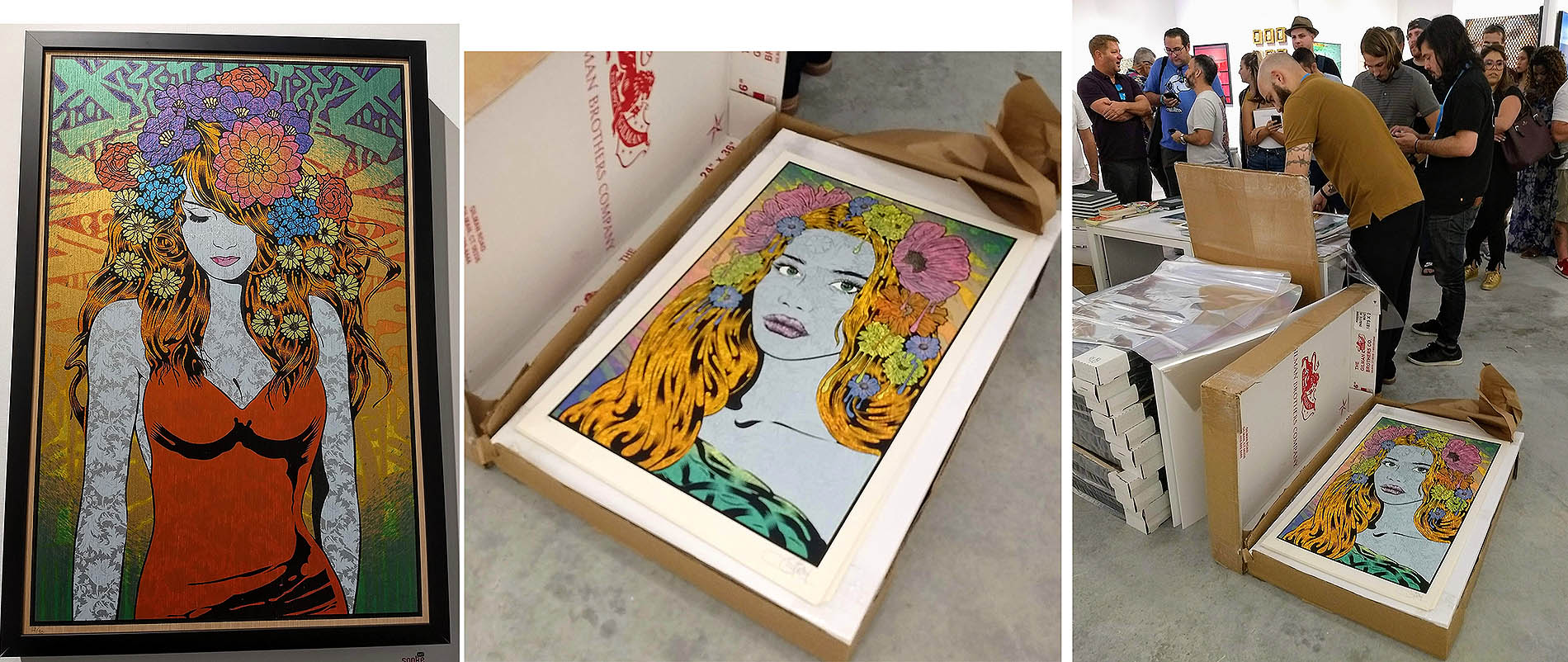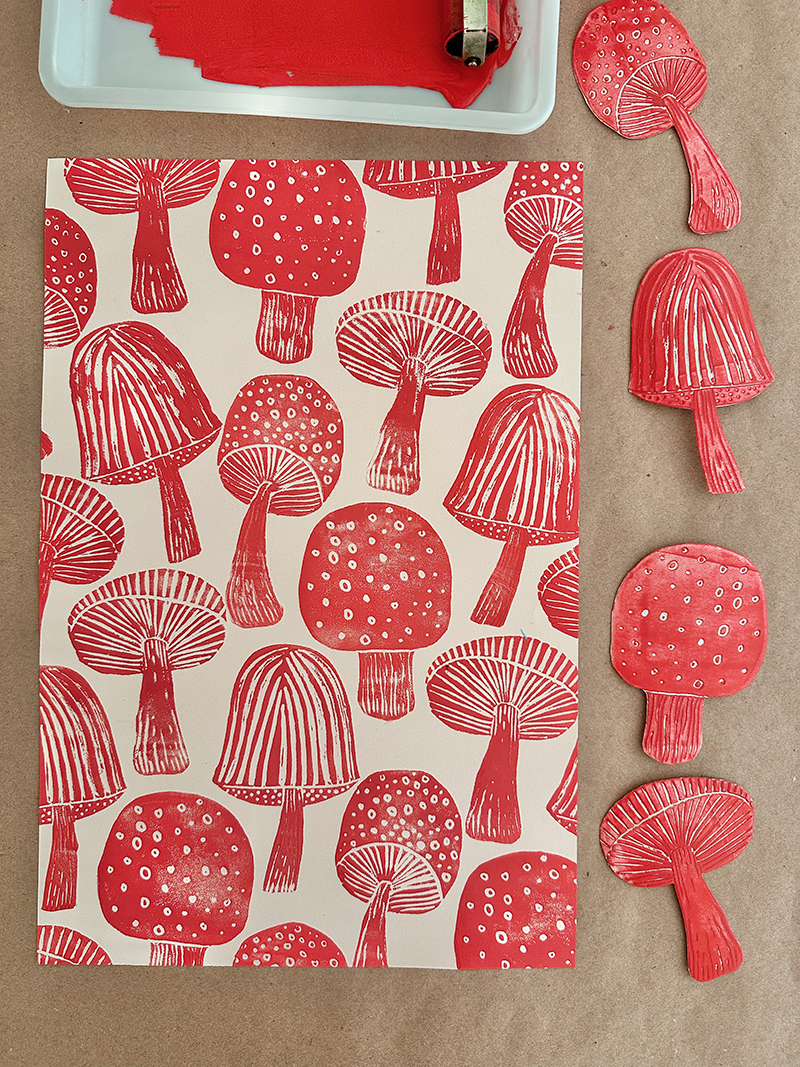Recently I was inspired by the last module in our Material Matters course which is all about printmaking! My partner Shannon and I spent this past year over on The Creativity Project exploring 12 different materials and art processes for our course, saving the best for last. Well, maybe not the best (for me it’s a tie with collage) but arguably the most rewarding.

As we were writing the playbook for this printmaking module, it forced us to define many of the different printmaking techniques that artists have used throughout history. There is silkscreening, monoprinting, collagraphy, etching, and block printing to name a few. There is also stamping which makes us think of rubber stamps, but can also include block printing and even some collagraphs. At first, we categorized styrofoam prints as etching, because it feels like you are etching into the foam when drawing and making indents. But then we came to understand that this is really more like carving, as in the process used for block printing, which is defined this way:
Block printing involves carving a design into a block of material like wood, linoleum, rubber, or foam. When ink is rolled on top, it lays on the parts that haven’t been carved away, then is pressed onto paper or fabric to create a mirror image, much like a stamp.

[ I am a participant in affiliate programs designed to provide a means for bloggers to earn small fees at no cost to you by linking to Amazon.com and affiliated sites. ]
These styrofoam block prints are really easy to make. Let’s start with the supply list.
Materials needed for Styrofoam Block Printing
~ Butcher paper or newspaper to cover table (100-ft roll for at-home use)
~ Styrofoam sheets (I really hate styrofoam but I had these 4×6 sheets left over. The most eco-friendly way to do this is to save and repurpose styrofoam packaged food trays)
~ Dull pencil or ballpoint pen
~ Printing ink (I used Blick but you can also purchase this Speedball starter set or individual colors)
~ Tray or non-porous surface like a cookie sheet or glass dish to roll out ink (or you can purchase this set of inking trays)
~ Brayers
~ A pile of newspaper sheets or scrap paper (so you can have a fresh sheet for each printing pass)
~ Nice paper, here I used 12 x 18 sulphite paper in light pink (from this color bundle, or just get white)
~ Hand wipes or damp paper towel

How to Print with Styrofoam
1. It helps to have an idea of what you want to draw before starting. You can’t erase on the styrofoam because it’s not the pencil marks that matter, it’s the indents in the styrofoam that matter. For these mushrooms, I drew them out on paper first so I could understand the sizing and varying shapes and textures. If you are doing this with children, it’s still helpful to have a plan. With very young children, ages 3 and 4, they can just draw directly onto the styrofoam because it matters less what they are drawing and more about the process. Not that process doesn’t also matter at ages 5 and up, but I think that 5 is an appropriate age to suggest thinking about a plan. Some children may not want to plan and will just jump right in and make marks and doodles onto the styrofoam and that’s fine, too. It depends on the time that you have, the size of the group, and your available resources.
2. Draw onto the styrofoam using a dull pencil or a ballpoint pen.
3. Cutting out the shapes is optional. In fact, it’s not necessary at all with children. We usually don’t cut out shapes when doing this with a class or a group. But for this patterned print, I wanted to cut out the shapes so that they could fit around each other.

4. Squeeze some printing ink at the top of your tray. I mixed a little white with the red to brighten the color and make it more opaque. Use the brayer to roll the ink in a small rectangle, going up and down and then sideways a few times until you hear the sticky sound and the roller is completely covered.
5. Make sure to have your stack of cut-up newspaper ready to roll on top of, and some wipes or damp paper towel to keep your fingers clean. You would be amazed at how quickly the ink finds itself where it shouldn’t be. When doing this with children, have one end of the table be the ink rolling area. You can even tape the tray down. Try and keep a system like this: clean paper is laid down on a clean part of the table; the ink is rolled onto the styrofoam plate in the inking area; then it is carefully brought over to the clean paper. It might be hard to manage this with a larger group so be flexible and accept that nothing will be perfect and it’s more about the experience!

6. Roll the ink onto the styrofoam, making sure to evenly cover the whole shape, then turn it over carefully onto the paper. I decided to start somewhere in the middle with the pattern. I had no real plan, but I knew with 4 different mushrooms there would be enough variation and I could make it work. I placed a clean piece of paper over the image and rubbed gently before pulling it off (see photo below).

7. You can see that the newspaper is different with each pass. I use a clean one each time so that the back of the styrofoam plate doesn’t get contaminated with ink. If you want to keep the paper clean of smudges and fingerprints, it’s really important to keep the back of the plate clean!

8. Here you can see that I use a clean piece of scrap paper to lay on top of the styrofoam and then rub gently all over to transfer the ink evenly.

9. The trick to creating a pattern is to give the illusion of repeating by printing images off the edge of the paper. When doing this, make sure you have scrap paper underneath on the sides so that the ink doesn’t print on the table paper. Again, this is not important when printing with children, but if you want to keep your print clean, it’s just another important step in making sure that ink doesn’t stray.
10. When finished you can run the styrofoam plates under water and clean them, and then they are ready for another color if you choose! Printing ink is water soluble so it’s easy to clean, but just like acrylics once it’s dry it will not come out of clothes. So dress for mess or wear a smock.

Here is the print framed in my daughter Ava’s college apartment down in Charleston. She basically loots my drawers of finished pieces when she is home and hangs everything in and around her living space. Luckily I can make more prints!
Share your printing experiences with me on Instagram! And while you’re over there, watch the reel I made of this process.
xx Bar
– – – – – – – – – – – – – – – – – – – –
Did you like this post? Here are more printmaking ideas:
 You can help support the show!
You can help support the show!
